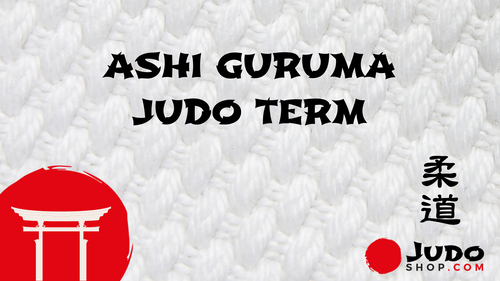Is Judo Dangerous - Unveiling the Shocking Truths Behind this Ancient Martial Art
Share

With its powerful throws and complex grappling techniques, one might wonder, "Is judo dangerous?"
Yes, judo can pose risks as it's a contact sport involving throws and grappling. However, with proper training, safety measures, and supervision, the danger is significantly reduced. Injuries can occur, but they're generally rare and not severe.
Judo, a dynamic martial art and Olympic sport, is often regarded as a physically demanding and intense discipline.
While judo does involve inherent risks, proper training and supervision can significantly reduce the potential for injuries.
In this article, we will delve into the techniques of judo, assessing the risks associated with throws and falls, as well as the safe execution of joint locks and submissions.
By understanding the importance of proper training and supervision, practitioners can minimize the likelihood of accidents and maximize their potential in this exhilarating sport.
Additionally, we will explore the protective measures available to judo practitioners to ensure their safety during practice.
So, let us embark on this journey to gain a deeper understanding of the question, "Is judo dangerous?"
Understanding the Techniques of Judo
Learning the intricate techniques of judo can be both thrilling and intimidating for practitioners.
Judo is a martial art that focuses on throws, pins, and submissions to overcome opponents.
These techniques require precision, timing, and control, making them effective for self-defense and competition. However, it is important to note that judo is not inherently dangerous.
The emphasis on proper technique and respect for one's training partner minimizes the risk of injury.
Judo practitioners are trained to fall safely and to apply techniques gradually, ensuring the safety of both themselves and their opponents.
Additionally, strict rules and regulations govern judo competitions, further reducing the likelihood of serious injuries.
Like any physical activity, there is always a risk of minor injuries, but with proper training and supervision, the practice of judo can be a safe and rewarding experience.
Assessing the Risks of Throws and Falls
Assessing the risks of throws and falls can be an eye-opening experience, highlighting the importance of understanding proper technique and body control.
In judo, throws involve using an opponent's momentum to take them off balance and bring them to the ground.
While these techniques may appear dangerous, they are actually executed with a high level of control and precision.
Judo practitioners undergo extensive training to learn how to safely execute throws and falls, minimizing the risk of injury.
Additionally, judo competitions have strict rules and regulations to ensure the safety of the participants.
Proper falling techniques, such as ukemi, are also taught to judo practitioners to reduce the impact of falls.
Overall, with proper training and adherence to safety protocols, the risks associated with throws and falls in judo can be effectively managed.
Safely Executing Joint Locks and Submissions
Executing joint locks and submissions in a safe manner requires a deep understanding of proper technique and precise control over one's movements.
In judo, joint locks are techniques that put pressure on an opponent's joints, such as the elbow, wrist, or shoulder, to force them to submit.
While these techniques can be effective in immobilizing an opponent, they can also be dangerous if not executed correctly.
It is crucial to apply joint locks gradually and with control, ensuring that the opponent's joint is not hyperextended or damaged.
Additionally, communication and trust between training partners are essential to prevent injuries.
It is important to tap out or verbally submit when feeling discomfort or pain to avoid unnecessary harm.
With proper training and adherence to safety protocols, joint locks and submissions in judo can be executed safely and effectively.
Importance of Proper Training and Supervision
To truly excel in joint locks and submissions, you must embrace the importance of proper training and supervision.
Judo techniques can be dangerous if performed incorrectly, which is why it is crucial to receive proper training from a qualified instructor.
They will teach you the correct form, techniques, and principles to execute joint locks and submissions safely.
Additionally, proper supervision is essential during training sessions to ensure that you are practicing the techniques correctly and avoiding unnecessary injuries.
A qualified instructor will closely monitor your progress, provide feedback, and correct any mistakes you may make. They will also ensure that you are training with partners who have a similar skill level, minimizing the risk of accidents.
Remember, safety should always be the top priority in judo, and proper training and supervision are key to achieving that.
Protective Measures in Judo Practice
One important aspect of practicing judo is ensuring that proper protective measures are in place to prevent injuries and maintain a safe training environment.
Judo practitioners must wear appropriate protective gear, such as a judogi (judo uniform), which is designed to withstand the rigors of training and competition.
This includes a thick jacket and pants, as well as a belt to secure the uniform.
Additionally, participants should wear a mouthguard to protect their teeth and gums during throws and groundwork. It is also important to have a clean and well-maintained training area to minimize the risk of slips and falls.
Coaches and instructors play a crucial role in enforcing safety guidelines and supervising training sessions to ensure that proper techniques are being used and that participants are not engaging in reckless behavior that could lead to injuries.
By following these protective measures, judo practitioners can enjoy the benefits of the sport while minimizing the risk of harm.
Frequently Asked Questions
What are the potential long-term effects of practicing judo?
Practicing judo can have potential long-term effects on the body, such as joint injuries, concussions, and chronic pain.
However, it is important to note that these risks can be minimized with proper training techniques and safety precautions.
Are there any age restrictions for participating in judo?
There are no age restrictions for participating in judo. Judo is a sport that can be practiced by people of all ages, from young children to older adults, as long as they are physically able to participate.
How does judo compare to other martial arts in terms of safety?
Judo is generally considered to be a safe martial art when compared to others.
Its emphasis on throws and joint locks, rather than strikes, reduces the risk of serious injuries.
Can judo cause serious injuries?
Yes, judo can cause serious injuries. While it is generally considered safe compared to other martial arts, the nature of throws and joint locks can result in fractures, dislocations, and sprains.
Is it common for judo practitioners to experience muscle strains or sprains?
While judo can cause serious injuries, muscle strains and sprains are relatively common and often occur during training or competition.
Conclusion
In conclusion, while judo can be a physically demanding and potentially dangerous sport, proper training, supervision, and adherence to safety measures can greatly minimize the risks involved.
Understanding the techniques, assessing the risks, and safely executing moves such as throws, falls, joint locks, and submissions are essential in ensuring a safe practice.
With these precautions in place, judo enthusiasts can continue to enjoy the sport while minimizing the potential for injuries.
Related Posts
-

Kayla Harrison's Judo Journey - Judo Champion Turned MMA Powerhouse
Kayla Harrison is a groundbreaking American judoka who made history by becoming the first American woman to win an Ol...
-

Judo Atlanta - List of Judo Clubs in Atlanta area
In Atlanta, you can find excellent judo clubs such as Atlanta Judo Midtown and Black Ice Fitness where you can train...
-

Guram Tushishvili Disqualified - JUDO DRAMA with Teddy Riner
Guram Tushishvili Disqualified - Unsportsmanlike Behavior to French Judoka Teddy Riner Leads to Disqualification fro...
-

Yeldos Smetov - Judoka Profile
Yeldos Smetov, a name synonymous with excellence in judo, has carved out an illustrious career that stands as a beac...
-

Judo Olympics 2024 Results - Gold, Silver, and Bronze Medalists
The Judo Olympics 2024 Results are eagerly anticipated as the Paris Games approach, promising a thrilling display...
-

Judo For Self Defense - Here Is Why Is Judo Best For Self-Defense
Judo For Self Defense packs a punch. This martial art, born in Japan, turns attackers' strength against them. No nee...
-

Ashi Hara Gatame - Judo Term Explained
Ashi Hara Gatame is a specialized technique in the martial art of judo, combining leg control, abdominal pressure, a...
-

Ashi Gatame - Judo Term Explained
Ashi Gatame is a Judo technique referring to a kansetsu-waza (joint lock) where one uses their legs to immobilise ...
-

Judo Olympics 2024: Highlights, Athletes, and Schedules
Judo Olympics 2024 enthusiasts, mark your calendars! From July 27 to August 3, the Grand Palais Éphémère near the Eif...
-

Ashi Garami - Judo Term Explained
What does "Ashi garami" mean in Judo? "Ashi garami" (足緘) is a Japanese term used in Judo that literally translates t...
-

Ashi - Judo Term Explained
Ashi is term in Judo, referring to a leg or foot and category of judo techniques designed to unbalance and throw an ...
-

Anza - Judo Term Explained
The term Anza in Judo (安座) embodies a significant practice beyond merely sitting; it signals a deep respect and disc...
-

Ashi Guruma - Judo Term Explained
Ashi Guruma is a Judo term rooted in the martial art of Judo, which translates from Japanese as 'leg wheel'. This ju...
-

Judo vs BJJ? Of course Judo! Judo is better!
Welcome to Judoshop.com, the premier destination for judo enthusiasts worldwide. Here, we cater to beginners and vet...
-

Hantei Judo Term Explanation
Contrary to popular belief, the term 'Hantei' in Judo is not just a simple decision-making process. It holds the p...
-

Dojo Meaning (updated 2023)
Dojos, places of immersive learning and meditation, hold great significance in martial arts. Derived from the Japane...
-

Hajime - Judo Term Explained
Ready to learn about Hajime in judo?It's all about using throws, pins, and joint locks on the mat. With the command ...
-

Ayumi Ashi - Judo Foot Work Explained
Are you ready to step into the world of Judo and master the art of Ayumi Ashi - 歩み足? This fundamental footwork techn...
-

Bushido Explained
Bushido, the traditional code of ethics followed by samurai warriors in feudal Japan, is a subject that fascinates ...
-

Ippon - Judo Term Explained
Imagine stepping onto the mat and feeling the adrenaline rush through your veins. In the world of judo, one ultimate...
-

Budo - Term Explained
In a world full of chaos and conflict, one finds solace in the ancient art of budo. Contrary to popular belief, budo...
-

Arigatou - Judo Term Explained
Do you ever wonder about the true meaning behind the Japanese word 'Arigatou'? Well, wonder no more! 'Arigatou' is a...
-

Aka Obi - Judo Term Explained
The aka obi, a red belt worn in Judo, is a prestigious symbol of expertise. Typically reserved for those holding a 9...
-

Why Are There 2 Bronze Medals In Judo
Judo is a unique sport that gives two bronze medals in each weight class. Many people wonder why this is done. To fi...
-

Ai Yotsu - Judo Term Explained
In the world of Judo, a term holds immense significance - Ai Yotsu. This grip, characterized by an intense and intim...
-

Is Judo The Toughest Sport - Unraveling the Grit and Grace of the Gentle Way
Judo, known as the Gentle Way, may seem like a paradoxical name for a sport, but don't let that fool you. While Ju...
-

Judo Terms - Complete List Of Judo Terms
Judo terms are the foundation of this martial art...
-

English to Japanese Kanji and Hiragana translations
Are you looking for an English to Japanese Kanji translation? Here you can find more than 30 examples of Kanji and ...




























